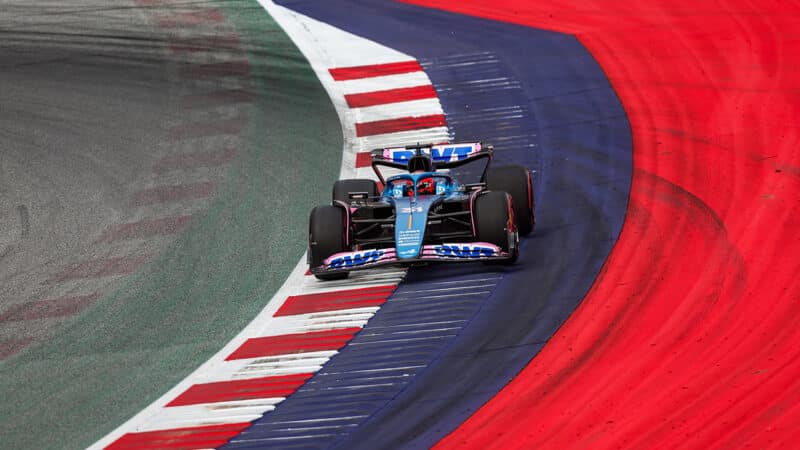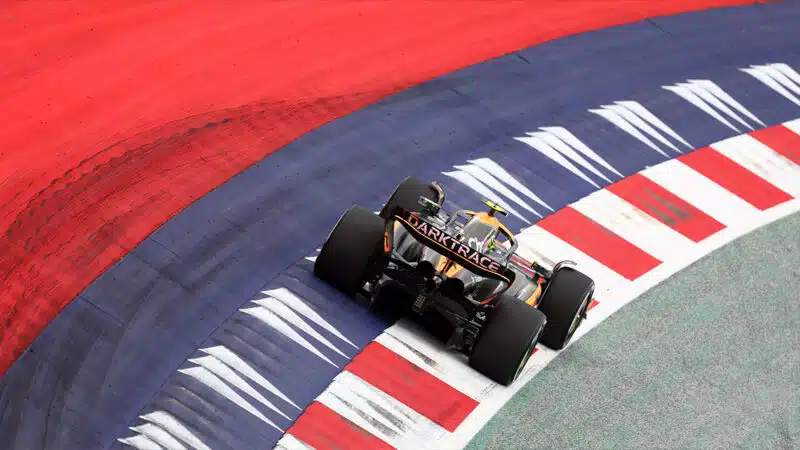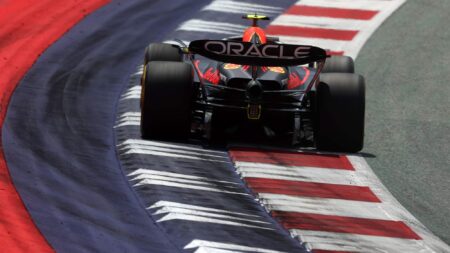There were multiple penalties handed out during the race and even more came post-race as part of a review that race control was already conducting before Aston Martin lodged a protest. It frustrated not only the teams and drivers, but also the FIA itself which issued a statement including the following comment: “In order to address the issue for future events we will renew our recommendation to the circuit to add a gravel trap at the exit of Turns 9 and 10.”
Well those solutions will be in place at Turn 9 and Turn 10 this year, as the Red Bull Ring responds to the challenges of a year ago.
Elsewhere, there will be semi-automated technology introduced, featuring a blue line concept that will be painted on the exits of both of those corners too. You may have spotted it at Turn 5, Turn 9 and Turn 11 in Barcelona, where it divided the white line on the exit of the track and the exit kerb.
The impact is it makes it much easier for AI technology to differentiate between a wheel being on or over track limits in marginal calls, where the white of the kerbing previously blended with the white line defining the track edge.
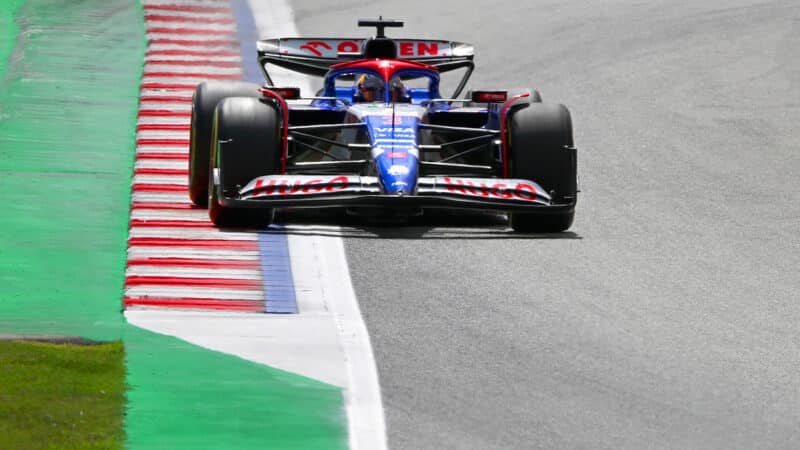
Blue line between kerb and track edge helps AI to detect track limit infringements
Rudy Carezzevoli/Getty via Red Bull
These examples can then be looked at by one of the personnel who would have previously been busy reporting and collecting video clips showing potential incidents of exceeding track limits. Freeing up those members — and being able to instantly acknowledge clear incidents of cars going beyond track limits — should lead to fewer instances where the race director is called upon to make a decision, and therefore quicker monitoring and resolutions.
Having been in constant testing since Abu Dhabi last year, the AI system will be in place from FP1 at the Red Bull Ring, and will learn the limits and how cars tackle different corners during those practice sessions to help ensure it is as accurate as possible come qualifying and the race.
Those major changes will also be complemented by the existing approach of support from the FIA’s Remote Operations Center in Geneva. Here, five people are monitoring the AI technology as well as multiple cameras to be able to analyse car placements and make quick judgements on the clearer incidents.
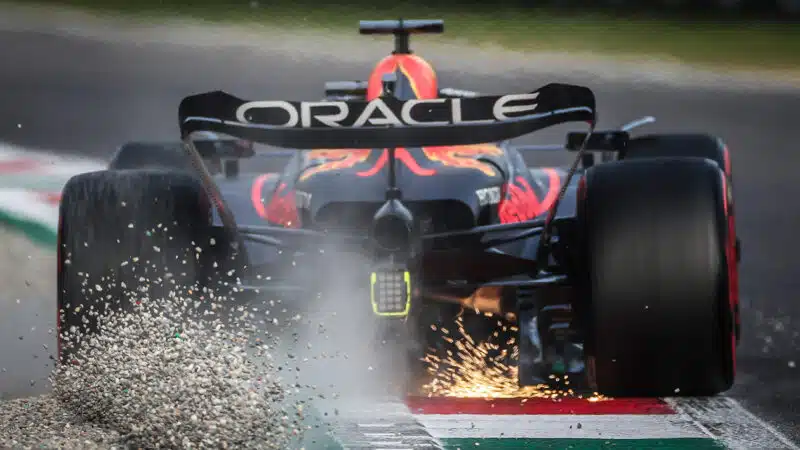
Kerbside gravel, here at Monza, penalises drivers who stray too far off the asphalt
Ryan Pierse/Getty via Red Bull
On a more basic level, the exit kerb at Turn 4 has also been narrowed in Austria, ensuring drivers can’t exceed track limits without dipping a wheel into the gravel and losing time. Clear punishments then don’t require penalising by race control.
Although it won’t lead to drivers always staying within the white lines by any means, all of the steps combined should ensure race control is able to delete lap times far more quickly and avoid situations such as last year, when the sheer number of incidents – and time it took to assess many of them – led to a backlog that couldn’t be kept up with both in the race and during qualifying.
There might not be fewer penalties, but if all goes to plan then the extensive measures should mean those penalties are handed out with greater speed and accuracy so that there is a known outcome during qualifying and the race itself.
